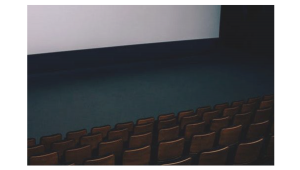I think you're partly correct that volume of flat panels is driven by the sizes of the substrate panels. However, the other volume driver that you don't mention is wall size. Dedicated home theaters are still relatively rare and a lot of people don't have an empty wall suitable for holding a flat panel much bigger than the 75 inch models that top the "common" size range. Even if 100" TVs became inexpensive, how many households would have a location for such a beast?
The Big Picture: How Big Is Big Enough?

In prepping for the May print issue’s focus on front projection, I found myself philosophizing on the value of having a big image for viewing movies, TV serials, and sports. Not just big, but really big.
We can, of course, make all the jokes about how no one shopping for a TV ever complained about having too big a set when they got it home (a truism for the most part, by the way). But there’s a reason that dedicated sports bars really sprung up as soon as affordable front projectors began seeping into the market, and why the trend in cathode-ray-tube and now flat-panel televisions has always been toward larger and larger screens. If I had more time, I’d try digging into the science of how our brains engage with cinematic images; how our emotional response to the program changes as the percentage of our peripheral vision is increasingly filled, as surely it must. But I don’t need the science to prove what I know anecdotally to be true: Bigger is always better.
Some of the technology to achieve a truly huge image at home remains expensive and elusive for the mass market. We’ve frequently mentioned in these pages the exorbitant cost of flat-panel televisions above 75 inches, though we know from experience that, as time marches on, manufacturers will build facilities capable of creating larger and larger substrate panels. These are the ginormous master panels from which smaller screens are cut. The bigger the substrate, the greater efficiency in punching out bigger individual screens. That ability to drive volume in these larger sizes with each new generation factory eventually leads to cheaper prices, even more volume, and...
How big will be big enough? At CES this year, Samsung showed its cutting-edge miniLED display — dubbed “The Wall” — at 146 inches diagonal. The technology relies on small modules that can be configured for any size they wanted, but company reps said they arrived at this dimension because the average U.S. home has at least one wall that is 8 to 9 feet wide and therefore large enough to accommodate a 16:9 screen of that size. Perhaps the sweet spot is really somewhere in between there and today’s 75- and 85-inchers. But the trend is clear, and for now it’s still toward bigger and bigger images.
Samsung’s Wall will launch later this year, at a final size and price that remained unannounced at press time. I’ll be surprised if it doesn’t cost multiple times my annual salary. But this relentless drive to expand image size has also resulted in the emergence of more affordable new technologies intended to bring the big picture to a wider audience. We recently explored two. The first, addressed in our annual front-projection primer update and in our review of the Hisense Laser TV, is the recent concerted push by manufacturers to promote ultra-short-throw (UST) projectors for home use. For those unaware, these are modestly sized components typically suitable for tabletop mounting that throw a projected image of 100 inches from only 6 inches away from the screen. Mated with an ambient light rejecting (ALR) screen mounted on the wall behind them, they’re a suitable substitute for a day-to-day flat-panel TV and considerably less costly than any modern day LCD or OLED TV of that size.
But the key benefit is not so much their ability to function in ambient light, which traditional projectors do as well. It’s the hugely simplified installation. All that’s required is a traditional TV credenza to support the projector and house the usual source and audio components — no mounting, no snaking long signal wires through ceilings and walls, no need for running electricity to some remote location. The Hisense marks the second 4K UST model to come through our shop, and we’ve tested a more affordable 1080p option as well. I don’t doubt we’ll see more.
Another fascinating big-screen alternative is the Royole Moon 3D Mobile Theater headset (watch for our review). Technically, this is a portable, wearable display device, but its intent to reproduce a genuinely cinematic experience and utilize the entirety of your peripheral vision really makes it more like a projector than a classic TV display. It wasn’t without its caveats, not least of which are its nearly pound-and-a-half weight and its $800 price tag. But it got the job done and left me wondering if future generations of products like this won’t also make the big, big, big-screen experience accessible to an even wider audience.
- Log in or register to post comments


My 55" fills the field of view of either eye nicely at 8'.

I have an old projection TV in my family room that is 73". in my Gym I have a 70" fear screen. The room is only 14 feet square.































































